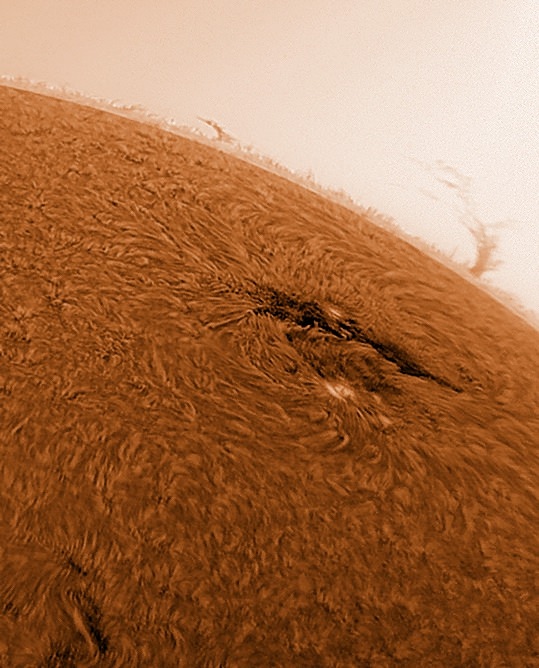Wow! What a view of Active Region 1542 on the Sun! César Cantú from the Chilidog Observatory in Monterrey, Mexico says this is “another way” of looking at the active region.
“It is an inverted image,” César said via email, which means it is essentially a negative which is then processed. “The process was done with software: Registax, PhotoshopCS5 and PixInsight,” he said.
César took this image on August 8, 2012. Note the incredible detail of the Sun’s swirling surface, the black bottomless pit of a sunspot, a tornadic-like prominence on the right and other wisps of solar material just above the surface.
He used a Meade 10 inch SC, with Coronado 90 mm and BF30 filters, along with a DMK31 camera. “The focal length is 2500 mm and correlated with the camera, approximately 210 X,” César said.
See the original at his website.
Want to get your astrophoto featured on Universe Today? Join our Flickr group or send us your images by email (this means you’re giving us permission to post them). Please explain what’s in the picture, when you took it, the equipment you used, etc.
Image caption: Active Region 1542 on August 8, 2012. Credit: César Cantú. Used by permission.


